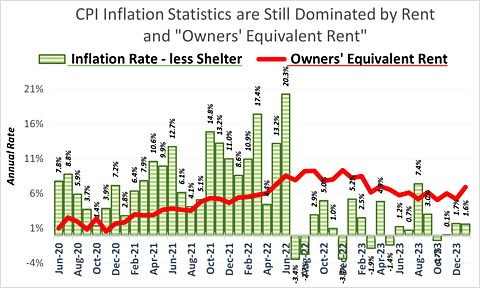Two actions this week highlight the Biden administration’s approach to surveillance issues implicating the constitutional rights of Americans.
The first is an executive order (EO) issued on February 28, 2024, that, in relevant part, directs the attorney general to issue regulations
… that prohibit or otherwise restrict United States persons from engaging in any acquisition, holding, use, transfer, transportation, or exportation of, or dealing in, any property in which a foreign country or national thereof has any interest (transaction), where the transaction:
(i) involves bulk sensitive personal data or United States Government‐related data, as further defined by regulations issued by the Attorney General pursuant to this section;
(ii) is a member of a class of transactions that has been determined by the Attorney General, in regulations issued by the Attorney General pursuant to this section, to pose an unacceptable risk to the national security of the United States because the transactions may enable countries of concern or covered persons to access bulk sensitive personal data or United States Government‐related data in a manner that contributes to the national emergency described in this order;
It’s safe to say that this is the next step in the “ban TikTok” movement that’s become one of the few bipartisan hobby horses in Washington in recent years. It’s also a perfect example of political hypocrisy in that President Biden’s presidential campaign established its own TikTok account a little over two week’s ago, with CNBC reporting that “Biden campaign advisors told NBC News the TikTok account is part of an effort to meet voters where they are.”
This EO is noteworthy in that it argues that “bulk sensitive personal data” flows to countries like China are a national security threat while providing no evidence that such data flows have, in fact, led to compromises of classified information, systems, or programs.
And then there’s the hypocrisy of the EO in terms of who it targets versus who is exempt from it.
Biden’s EO does nothing to stop the FBI, the Drug Enforcement Administration, the Bureau of Alcohol, Tobacco, Firearms and Explosives, Homeland Security Investigations, US Immigration and Customs Enforcement, US Customs and Border Protection, or any other federal law enforcement agency from obtaining exactly the same kind of data broker–derived personal information on Americans that it seeks to keep out of the hands of China, Russia, etc. And it is those very agencies and their commercial data acquisition practices that led the House Judiciary Committee in December 2023 to vote 35–2 in support of the Protect Liberty and End Warrantless Surveillance Act (PLEWSA), which would, among other things, amend the Foreign Intelligence Surveillance Act (FISA) to mandate a warrant to obtain such data.
And the strong bipartisan support for PLEWSA brings me to the other Biden administration surveillance‐related action this week: an attempt to get FISA renewed without congressional approval.
The same day the Biden EO on data flow bans or restrictions via foreign entities was announced, The New York Times reported:
The law had been set to expire in December, but Congress voted to extend it until April 19 to give itself more time to debate proposed changes. Lawmakers have yet to reach a consensus, and this month, a plan to hold a floor vote on the matter collapsed in the Republican‐controlled House before a two‐week recess.
The legislative paralysis has brought the calendar to the moment when the Justice Department and the Office of the Director of National Intelligence each year normally ask the Foreign Intelligence Surveillance Court to issue new certifications allowing the program to operate.
The law essentially requires the executive branch to ask the court to renew the certifications at least a month before they lapse to ensure there is no gap in coverage. The current orders governing the program expire on April 12, and officials have said they build in another week to give communications companies time to adjust their systems to any changes.
The law also says the program can keep going for the duration of annual orders from the court—even if the underlying statute expires in the meantime.
The New York Times claims that the administration is seeking an extension of the existing FISA Section 702 orders through April 19, 2025.
In theory, this kind of legal play by the Biden administration would only apply to persons or entities currently targeted under the program. But what about new alleged threats discovered after any Foreign Intelligence Surveillance Court approval of an extension of 702 authority through April 2025?
Based on a Clinton administration–era precedent, the next president could simply direct the National Security Agency or the Central Intelligence Agency (CIA) to carry out new electronic surveillance targeting under EO 12333.
We know about this precedent thanks to an ongoing Cato Freedom of Information Act lawsuit against the Privacy and Civil Liberties Oversight Board and the revelation of a CIA electronic surveillance program under EO 12333 between at least 1995 and 2000.
If a president were to designate such surveillance a covert action, it could be carried out without the House or Senate Judiciary Committees (the normal committees of jurisdiction for FISA) being informed; notification would only go to the House and Senate Intelligence Committees and the senior‐most leadership of the House and Senate—which historically have been very pro‐surveillance regardless of party affiliation.
It may also be that the Biden administration has leaked this potential FISA congressional end‐run ploy as a means of putting fresh pressure on House Speaker Mike Johnson (R‑LA) to once again bring a FISA Section 702 renewal bill to the House floor before the current April 19, 2024, FISA Section 702 expiration date.
Either way, the fight over efforts to protect Americans from unwarranted or even illegal surveillance by their own government is only intensifying.









